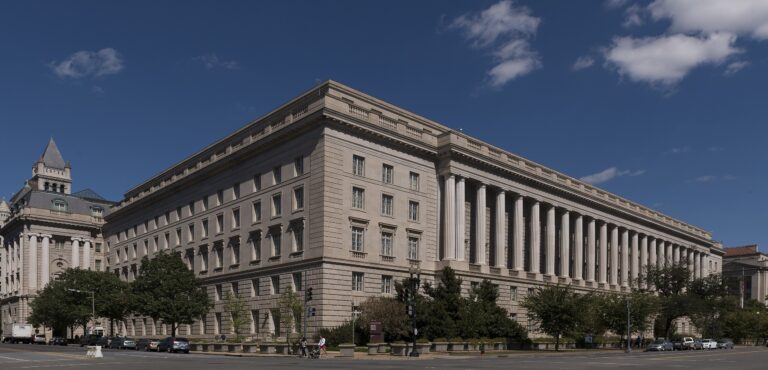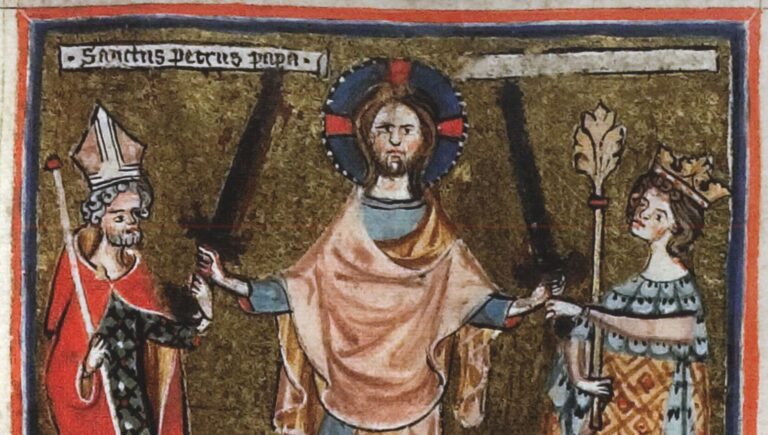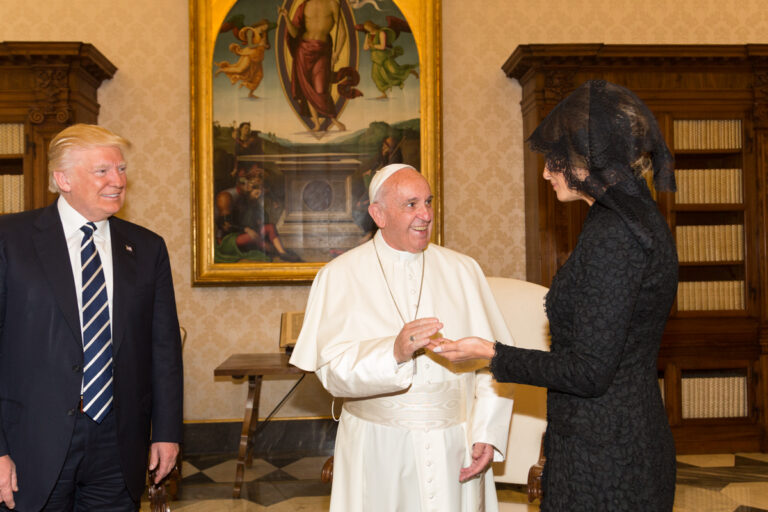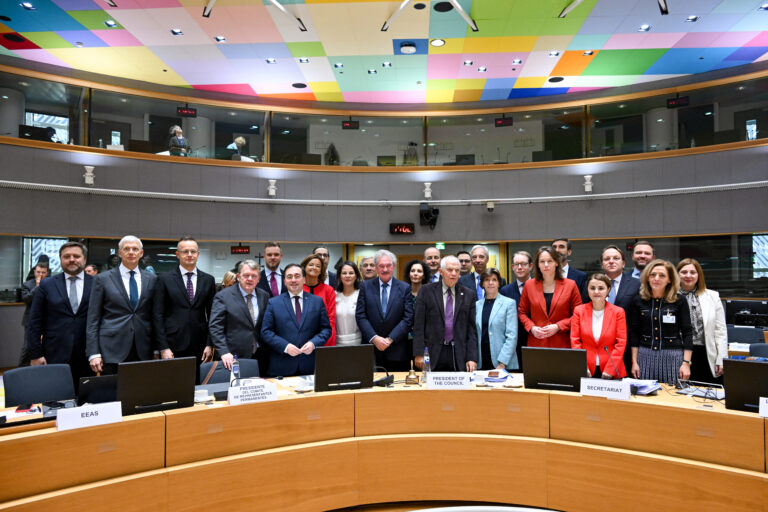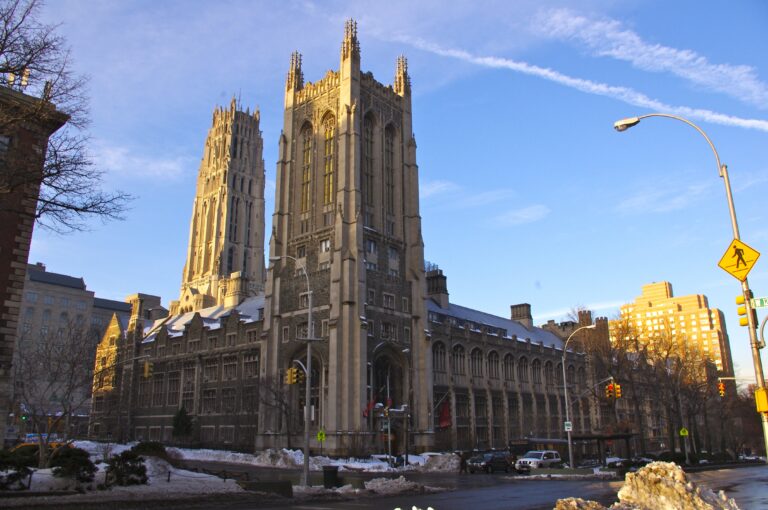
Violence in Nigeria: discussion of the statistical evidence for the disproportionate targeting of Christians
Dennis P. Petri & John Bainbridge
Makoko Lagos, Nigeria by Collins Okoh (CC BY-SA 4.0)
A longstanding debate in the social sciences concerns whether violence in civil conflicts targets specific groups or is indiscriminate. Security scholar Stathis Kalyvas, in his 2006 seminal book The Logic of Violence in Civil War, argues that indiscriminate violence is less likely when actors have high levels of information and control. He suggests that indiscriminate violence is often counterproductive, leading actors to move away from it as conflicts progress. Professor of public policy Jeremy Weinstein, in his 2007 book Inside Rebellion: The Politics of Insurgent Violence, posits that the level of indiscriminate violence used by rebel groups is influenced by their initial resource endowments. Rebel groups that emerge in resource-rich environments tend to commit higher levels of indiscriminate violence, while those in resource-poor environments are more selective in their use of violence.
In 2015, political researcher Andreas Schedler found that in Mexico, victims of violence can fall into both categories: some are targeted because they are believed to have ties with adversaries in the conflict, while in many other cases, the violence appears to be indiscriminate. Casualties in such cases can be categorized as “collateral damage.” Adopting a statistical probabilities method, political scientist Jos Bartman concludes that in Mexico “journalists are at a much higher risk of being murdered than the general population.” Bartman notes that this “undermines the official narrative that there is nothing distinct about violence against journalists, and that it is a mere corollary of crime,” proving that journalists are, in fact, victims of targeted violence. They run a statistically higher risk than the general population of being killed by both organized crime and subnational government officials because of the nature of their work. Dennis P. Petri (2021) established that actively practicing Christians in northeast Mexico possess a specific vulnerability to suffer human rights abuses at the hands of organized crime, which is a direct consequence of their behavior and therefore not indiscriminate. This refers to factors like the moral influence of Christian leaders and their unique mobilization capacity.
There can never be a definitive answer to the question of indiscriminate violence, as it depends on the nature and phase of each civil conflict. Two things are clear, however: we should not automatically assume that violence against a particular group is indiscriminate and we should also not assume that a defining characteristic of that group is the key driver of violence. Yet, these implicit assumptions are often made–not surprisingly, given political agendas and a basic human desire for a single and simple explanation to an event.
Further hurdles to understanding violence include the lack of data to make a more accurate assessment of the factors at play and that information gathering in authoritarian contexts is obviously difficult and dangerous. When data is available, much also depends on the geographic focus that is adopted. If the data is considered at the national level, this may conceal important subnational variation, as political scientists Jason Klocek and Dennis P. Petri have highlighted for FoRB datasets.
It’s even more complicated in civil conflicts where religion is a factor. Databases like ACLED (Armed Conflict Location & Event Data), the current gold standard for conflict data, do not record the religious affiliation of victims. The same is true for much academic research and media reporting. Basedau has argued this is explained by the complexity and sensitivity of religion, data limitations, and a traditional focus on other factors. Not entirely without reason, Hurd and Pérouse de Montclos have cautioned against calling conflicts religious to avoid exacerbating them.
As we argue in this essay, when considering national-level aggregates or cherry-picking violent incidents, absolute numbers may be misleading, at times even implying that Nigerian violence is indiscriminate. However, if one focuses on the subnational level, we can observe that targeting of and by specific groups appears to be a reality. Furthermore, differentiating between perpetrators further refines the analysis.
In the following section, we take a closer look at both the subnational and the perpetrator levels, using empirical data from Nigeria. We draw on new data spanning four years (October 1, 2019, to September 30, 2023) from the Observatory for Religious Freedom in Africa (ORFA), a program of the Foundation Platform for Social Transformation that is used as a source for the Violent Incidents Database of the International Institute for Religious Freedom (IIRF).
Subnational Divergence: The Case of Nigeria
Nigeria is a country of very cluttered and often misunderstood civil conflict, not least due to it numbering among the nine countries in the world without a clear religious majority. We draw inspiration from Jos Bartman’s statistical probabilities approach and show that Nigerian Christians seem to be targets of violence to a greater degree than Nigerians holding other religious affiliations. Data from ORFA suggests this is the case across the country and across most perpetrators, although variation can be noted on both points.
One of the key offerings of ORFA’s four-year report is the adjustment of abduction and killings ratios in the country according to religious affiliation based on regional estimated populations for those religions. The report is particularly interested in the ratios of Christian to Muslim victims of such violence, but it also records violence against African Traditional Religions (ATR). There are two excellent reasons for this approach. First, at a glance, the nation just seems to be very violent, with thousands of people being killed, both Muslims and Christians, so any Christian targeting that is happening must be woefully ineffective because so many Muslims are victims as well (the ORFA report cites 16,769 Christians and 6,235 Muslims killed). Some incidents show an even split of victims. Second, at a subnational level, you may also have similar numbers of victims from both religions even though there are quite different proportions of those two faiths in that region (Borno State, in North East Nigeria, would be a good example). To illustrate the first point, let us highlight a real abduction event.
It was December 2021 in Kaduna, North West Nigeria. More than 70 travelers near Udawa village, along the Kaduna-Birnin Gwari road were violently abducted. Witnesses later said that the vehicles conveying the travelers, mainly traders, were attacked by a large number of gunmen, suspected to be bandits and then their occupants later moved into the forest. Reports indicate 48 were later rescued but the fate of the remaining number is not clear. For this incident, our reports indicate that 35 Christians and 35 Muslims were abducted. Sounds like exactly half and half? While it is meaningful to establish that apparently individual indiscriminate attacks might exist, the state average ratios are quite different from this ratio of one Christian to one Muslim, and get even worse for the Christians there once population is accounted for. Let’s dive in.
Here are the four-year abductions counts in Kaduna per religion: 4,337 Christians abducted; 1,117 Muslims abducted. That sounds like four Christians for every Muslim, a 4 to 1 ratio. Factoring in religious population demographics to ascertain a truer ratio is ORFA’s key point, countering ideas of indiscriminate or moderate bias of violence against Christians. Since in Kaduna there are estimated 3,235,400 Christians (35% state population) and 4,622,000 Muslims (50% state population), the 4:1 ratio can be adjusted on the basis of equal populations. In real-terms, there are 3 Muslims for every 2 Christians here. Therefore, the truer ratio of Christians to Muslims abducted in this state is closer to six to one than four to one. Typically, in Kaduna, Christians were almost six times more likely than their Muslim neighbors to get abducted: not 1:1 as individual reports can imply and not 4:1 as the state average could imply. ORFA appears to be even-handed in this approach and we see the ratio either increasing or decreasing when this weighting system is implemented across groupings of states in geopolitical zones, but the lowest adjusted ratio of Christians to Muslims killed still remains at least three Christians for every Muslim.
What do we need to be wary of when rebalancing the numbers in this way? Translating probabilities back into counts. It is not the same thing as to say that 5.7 times more Christians are being abducted in Kaduna based on this data. In Kaduna, we can only say that four times as many Christians have been abducted as Muslims. The language must be precise to avoid misinterpretation of the data.
Apart from departing from the literal truth of the statement, research by Jonathan Fox discusses the shifting dynamics when minority religions are no longer minorities in his work on religious causes of discrimination against ethno-religious minorities. He emphasizes that such extrapolations should always be used with caution and with an explanation of their purpose, primarily because they are probabilistic in nature.
Based on data collected by ORFA on civilian killings by religious affiliation, we do note a persistently greater chance of killing for the Christian civilian, with significant subnational variations (Figure 1).
Figure 1: Probability of civilian killing in ORFA data per geopolitical zone
While the chances of being killed in Nigeria are relatively high, we can nonetheless observe: a) consistently worse probabilities for Christians nationwide and b) worse probabilities for members of both faiths in the north. The data clearly suggests that both religious affiliation and geopolitical zone have an impact on the outcome.
The distinction between Christian and Muslim victims appears least obvious in the North West region and most pronounced in North Central and the “calmer” zones of the South based on real counts. However, ORFA are adamant that the North West is very pronounced indeed given the small numbers of Christians living in the Zone. We can give their adjusted ratios with the aforementioned caution on usage (Table 1).
Table 1: Ratio of Christians to Muslims killed based on population size in different regions
| North Central | 4.6 |
| North East | 5.3 |
| North West | 7.5 |
| South East | 5.3 |
| South South | 6.3 |
| South West | 3.1 |
Thus, a Christian in North West Nigeria may be over seven times more likely than their Muslim neighbors to be killed, the highest such ratio in the country. An absolute probability for a Christian will thus be likely higher than the North West average and the probability for a Muslim lower than the North West average.
Perpetrator Analysis
Let’s now turn to the perpetrators, and analyze the contribution of different perpetrators to the subnational divergence we’ve discussed. We have established that the violence in Nigeria is not always indiscriminate, but that there is specific targeting of religious groups. This, of course, does not say anything about the severity of the violence committed against Muslims, which is just as real. Also, some aggressors may select victims based on religious motivations, and some might not. Another interesting insight is the analysis per perpetrator to stress the importance of breaking down these figures and seeing what the real thrust of the ORFA data could be. There is a huge role of Armed Fulani Herdsmen for instance, both in terms of percentages and raw numbers (Figure 2).
Figure 2: Nigeria killings by victim religion and percentage
In this plot we see victims identified as Christian consistently killed at a greater rate than Muslims for all perpetrators with the exception of “vigilantes,” whose relevance, however, is minimal given 65 killings in the period covered. Readers might suspect the most clearly Muslim perpetrators to have the highest percentages of Christian killings. Muslim perpetrators in this list would be Armed Fulani Herdsmen, Islamic State’s West Africa Province (ISWAP) and Boko Haram (BH). But both ISWAP and BH have high rates of Muslim victims and other groups exceed them in terms of Christian targeting rates, such as cultists and Indigenous People of Biafra (IPOB), which even comprises Christianity and Igbo traditions. At the very least, the data suggests that it would be an oversimplification to present the Nigerian conflict as inter-religious only. Real numbers will help further tease out the distracting factors and help focus our research efforts (Figure 3).
Figure 3: Nigeria killings counts by victim religion
“Other Terrorist Groups” have contributed a very large number of killings – a broad category, that deserves to be unpacked especially if it includes the unchartered impact of groups like Jama’tu Ahlis Sunna Lidda’awati wal-Jihad (JAS) who are reported to kill and steal from everyone. However, it is the Armed Fulani Herdsmen who are clearly shown as the primary drivers of this Muslim/Christian killings disparity. This raises questions about the goals of the Fulani Herdsmen, as well as why they are responsible for 1400 Muslim deaths and 1903 Muslim abductions (many of which are probably Muslim Hausa and even other Fulani). Much work is needed to better understand the appeal of Christian victims to Fulani perpetrators in particular alongside other victim criteria, investigating respective wealth and regional ethnic dispute histories that might map onto religious affiliations and even third-party meddling to amplify unrest.
Concluding Remarks
To demand a response from the Nigerian government and the international community, it is probably not necessary to demonstrate that Nigerian Christians are more vulnerable to suffer violence than other religious groups. Documenting that civilians suffer in large numbers should already be sufficient. There are however, three important implications of our findings.
First, establishing divergence in the killings between Christians, Muslims and other religious groups does not automatically imply that the violence should be categorized in terms of FoRB (Freedom of Religion or Belief) violations. However, considering the broader context of the violence in Nigeria, it is reasonable to assume that the majority of the violence cases are indeed FoRB-related because they create a climate of fear and displacement in local communities, which directly distorts Christian religious life.
Many will be quick to point out that the civil conflict in Nigeria should not be characterized as a religious conflict, but rather as an ethnic conflict fuelled by socio-economic grievances rooted in its colonial legacy. They might even point to individual attacks where equal numbers of Christians and Muslims were killed or abducted. It is helpful in this regard to bear in mind that conflicts are almost always multifactorial, and it is often impossible to single out the religious dimension. In other words, the civil conflict in Nigeria has a religious dimension, but it’s not the only one, as it exists alongside other dimensions, whether ethnic, economic, or political.
Using the metaphor of the “persecution eclipse,” a Nigerian scholar, who prefers to remain anonymous for security reasons, has posited that the political and economic factors related to ongoing civil unrest often overshadow and obscure the religious dimension of the violence in Nigeria.
In other words, any alternative ethnic, political, economic or social explanation for the violence in Nigeria does not invalidate the existence of a religious dimension.
Second, it would be very helpful if academic datasets such as ACLED and media reports could systematically identify the religion of victims and perpetrators. We may indeed be faced with a perplexing combination of obstacles here. On the one hand recording victim or even perpetrator religion can be complex, unknown or even legally problematic in some regions. On the other, the significance of religion may continue to be understated in both the press and the research agency portfolios. ACLED, for instance, did have a project that chartered religious affiliation for a select number of countries, but that has been discontinued. Fortunately, the Violent Incidents Database (VID) of the IIRF is picking up where ACLED left off and is recording perpetrator groups and victim religion data.
Finally, caution is required when citing and interpreting the ratios. As explained above, the ratio is helpful in communicating the respective probabilities of attack on the individual at a geopolitical zone level according to their religious affiliation, and should not be used to convey ideas such as “X many times of Christians were killed in area Y”. It is also unwarranted even to state that this would represent the number of Christians killed or abducted were the populations equal.
The VID of the IIRF will continue to track religious variables with the express intent of understanding the dynamics better. In fact, for any given incident, VID researchers will attempt to complete no fewer than 36 variables, many of which are mandatory. This can provide powerful insight into exploring the all-important question raised about the criteria of victim-selection in different contexts worldwide, including Nigeria. ♦

Dennis P. Petri, PhD is the International Director of the International Institute for Religious Freedom and Founder and scholar-at-large of the Observatory of Religious Freedom in Latin America. He is a Professor in International Relations and Head of the Chair of Humanities at the Latin American University of Science and Technology and the Latin American Faculty of Social Sciences. He is the author of The Specific Vulnerability of Religious Minorities, a book on undetected religious freedom challenges in Latin America.

John Bainbridge (BBA) serves as a data analyst for the IIRF and is responsible for database management for the Violent Incidents Database. He specialized in data analysis after working as a country coordinator for an NGO advocating for the religious rights of minorities in North Africa.
Recommended Citation
Petri, Dennis and John Bainbridge. “Violence in Nigeria: discussion of the statistical evidence for the disproportionate targeting of Christians.” Canopy Forum, September 11, 2024. https://canopyforum.org/2024/09/11/violence-in-nigeria-discussion-of-the-statistical-evidence-for-the-disproportionate-targeting-of-christians/.
Recent Posts




